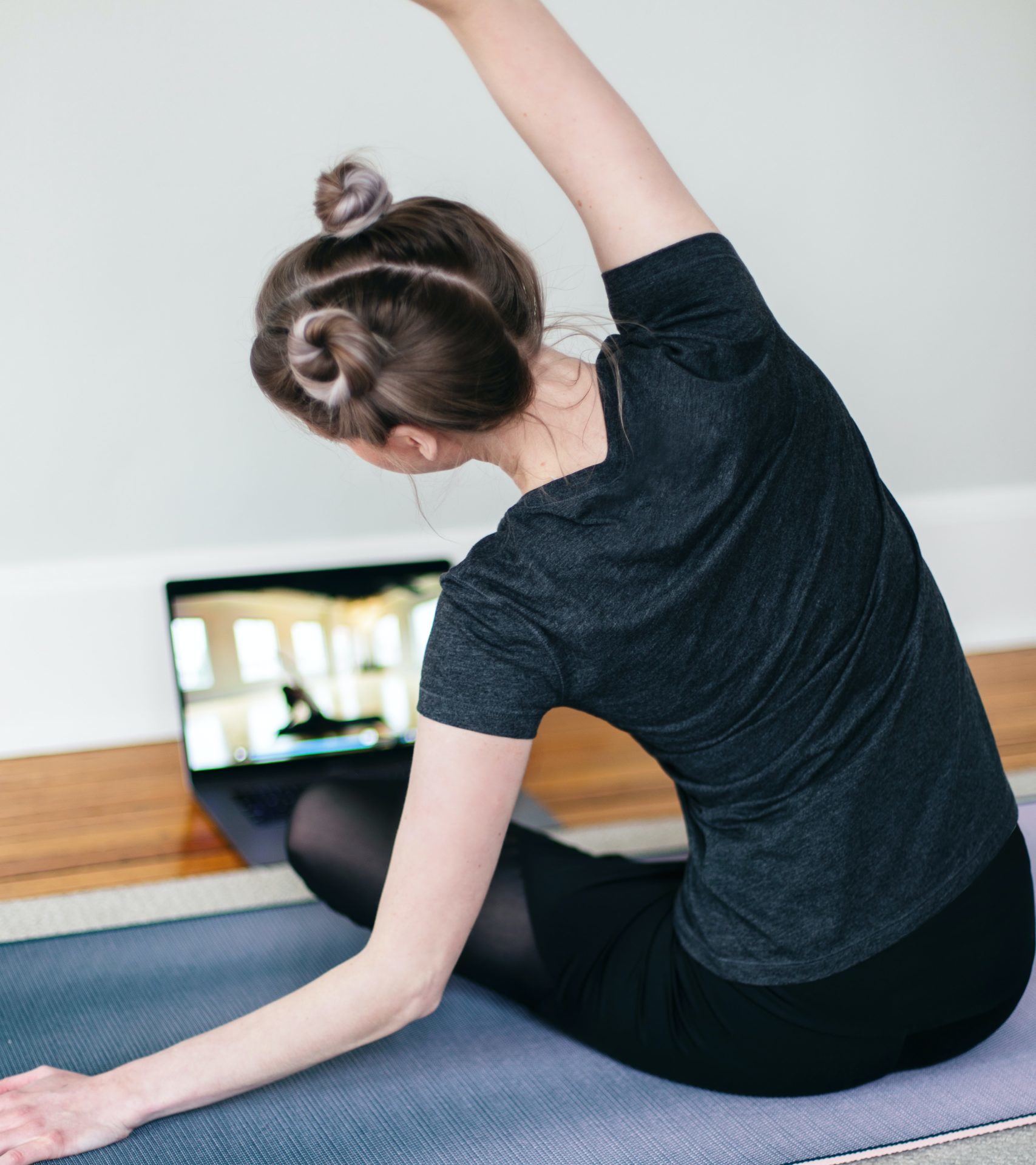Many people are just starting to get back into exercising regularly after the holiday season or after recovering from any form of sickness. Others might have stopped working out for a long time and are just about to begin again. As of this moment, the safest way to do formal physical activities that can focus on overall fitness is to do home workouts, either doing it by yourself or following online live classes and workout videos.
Before pursuing any online workout at home, don’t forget to consider your overall state. It would be best to survey your exercise environment and give importance to the proper setup of your online devices and exercise props. You also need to know the basic exercise form and execution to avoid injuries.
I’ve already written about the basic guidelines on balancing your Zoom workout classes. It can help you stick to your workout routine and get the fitness results you want to achieve.
Now, let me share the essential things you should consider before, during, and after engaging yourself in any online class.
Prepare your exercise space at home
- Choose your best exercise spot at home, free from all types of distractions. Consider your bedroom, living room, garden, or any private space that you can freely move around and motivate you to push yourself while doing your workouts.
- Use an exercise mat with an excellent grip to avoid sliding. Doing high-intensity cardio routines like jumping jacks and burpees or skipping rope is essential.
- Room temperature is essential to safely and successfully finish a workout. Make sure you have enough ventilation by opening your windows, turning on your fan or air-con, with the proper temperature that will give you good exercise sweat. Always match your exercise room temperature with the current weather.
- Get the best exercise equipment that matches your exercise type, goals, fitness level, and current health condition. Get effective workout tools like dumbbells, exercise bands, a yoga/Pilates mat, and a stability ball. A beginner home workout routine usually includes bodyweight exercises or a strength training routine using light dumbbells (2 to 5 pounds). Listen to your body and progress your exercise intensity systematically by gradually increasing your exercise load and exercise duration.
Strategically set up your online devices
- If you are joining live Zoom classes, turn on your video and move closer to your device while ensuring you can be seen from the head up to your toes. The instructor can give feedback when it comes to form and give you instant exercise modifications during the class. Always choose “Speaker View” to see the instructor’s detailed exercise demonstrations. Zoom workouts using a “Gallery View” where you can see all the participants can add more motivation and excitement as if you are joining a real group fitness class. However, it can also be very distracting and take your attention away from the instructor performing the actual exercise routines.
- Choose a device with a bigger screen. Invest in good WiFi with at least 20Mbps download speed and good quality gadgets like laptops and Bluetooth speakers or earphones. Always have a backup plan, like always making your tablet or smartphone readily available if something happens with your primary device.
- Always consider the position of your gadget while doing online workouts to avoid the most common injuries of the neck, shoulders, and back. Your monitor should be eye level while working out, so constantly adjust the position of your device when you change your exercise positions (standing, kneeling, and lying down).
Don’t skip warm-up and cool-down
- An exercise warm-up routine can safely condition your body before the main exercise event. Always come on time so you can start your workout session with a four to a five-minute warm-up routine that involves dynamic stretches and basic moves that can gradually increase your heart rate.
- Don’t skip the three to five-minute cool-down routine because you need to gradually lower your heart rate and perform the static stretches (holding the stretch for at least 15 seconds) for your torso, arms, buttocks, thighs, legs, shoulders, and arms.
Know the basics of exercise breathing and form
- Incorporate breathing with every movement during a workout session to establish proper form, core activation, exercise pace, and intensity. Listen to the instructor’s cues and inhale and exhale while making the exercise moves.
- Be mindful of the basic exercise form and alignment: how to maintain a neutral stance (feet hip-width apart), neutral spine (avoid arching the back), bringing your shoulders away from your ears as you move your arms in all directions, keeping your lower back on the mat as you lift your legs and do abdominal exercises, aligning your elbow directly below your shoulders when you plank and bringing your buttocks out as you squat, so your knee doesn’t go past your toes.
Be open to exercise modifications
- Always watch out for the instructor’s exercise modifications so you can always lower down or increase your exercise intensity when needed. That’s why I always highly recommend using fitness trackers for heart rate monitoring to finish a workout session safely and effectively successfully.
- Modify your exercises according to your current physical condition by changing exercise positions or lessening or adding exercise load. You can also change the range of motion (half, mid or full range moves) and the exercise pace (moving to the beat of the music or cutting the face into half).
Wear proper workout clothes and footwear
- When doing strength training, wear your workout shoes to protect your knees and feet, especially when lifting hard exercise props like dumbbells, barbells, or kettlebells. Use a pair of cross-training shoes for cardio workouts like dance, fitness boxing, high-intensity interval training (HIIT) class, and circuit training. You can work out barefoot or wear your sticky socks for light to moderate workouts like yoga, Pilates, or core training while on the mat.
Communicate with your fitness coach
- It is essential to communicate with your fitness coach and inform them of valuable information to help with the exercise program. These include your workout history, current fitness condition, existing health issues and injuries, and your health and fitness goals.
- Continue to talk to your coach about your current concerns regarding your exercise sessions. Inform them of the exercise moves that can cause discomfort to your joints, mention your favorite exercise that you find effective, and ask other ways to vary or level up your workouts to maintain your exercise motivation. As you become consistent with the exercise habit, you can get the fitness results you’ve been aiming for.
Email the author at [email protected] or follow her on Instagram @mitchfelipemendoza









































